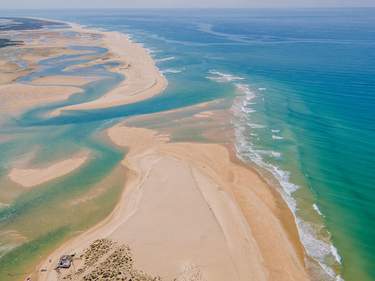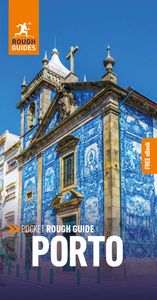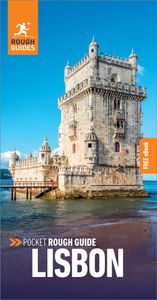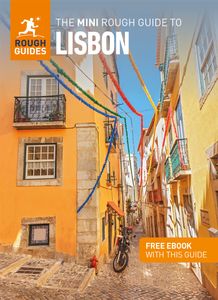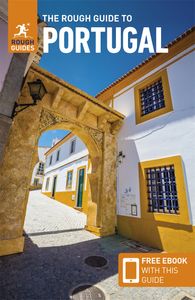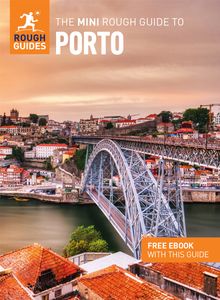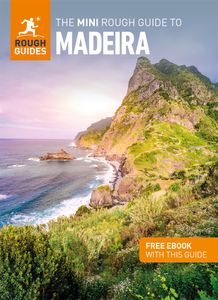Where to go in Sintra
The town’s historic centre spreads across the slopes of several steep hills. Dominating the centre of Sintra-Vila are the tapering chimneys of the Palácio Nacional, surrounded by an array of tall houses painted in pale pink, ochre or mellow yellow, many with ornate turrets and decorative balconies peering out to the plains of Lisbon far below. All this is highly scenic – though summer crowds can swamp its narrow central streets, and once you’ve seen the sights, you’re best off heading to the surrounding attractions up in the hills. Easiest to reach are the Castelo dos Mouros and the extraordinary Palácio da Pena – both visible on the wooded heights above town – or the lush gardens of Monserrate, though you’ll need a car to see the Convento dos Capuchos.
Palácio Nacional
Best seen early or late in the day to avoid the crowds, the sumptuous and wonderfully atmospheric Palácio Nacional largely dates from the reign of Dom João I (1385–1433), making it the oldest surviving palace in Portugal, though sadly, after the fall of the monarchy in 1910, most of the surrounding walls and medieval houses were destroyed. Embellished by a series of monarchs – notably Manuel I (1495–1521) – the palace displays a range of architectural styles from Moorish tiles to Manueline decorations and Gothic battlements.
On the lower floor of the palace, you’ll pass through the beautiful Sala dos Cisnes (Hall of Swans), a reception room named after the painted swans on its ceiling, and the Sala das Pegas (Hall of Magpies). The story goes that Dom João I had the room decorated with as many magpies as there were women at court, implying that they were all magpie-like gossips after he was allegedly caught canoodling with one of the servants. The highlight of the upper floor is the gallery above the palace chapel. Beyond here, a succession of state rooms leads to the Sala das Brasões, a dazzling domed hall embellished with 72 coats of arms representing Portuguese nobility. Finally, back down on the ground floor, don’t miss the kitchens, whose roofs taper into the 33m-high chimneys which are the palace’s distinguishing features.
Quinta da Regaleira
Just a five-minute walk southwest of town on the Seteais–Monserrate road, Quinta da Regaleira is one of Sintra’s most elaborate estates, laid out at the start of the twentieth century, and declared a UNESCO World Heritage Site in 1995. The Italian’s sense of the dramatic is obvious. The principal building, the mock-Manueline Palaçio dos Milhões, sprouts turrets and towers, though the interior is sparse apart from some elaborate Rococo wooden ceilings and impressive Art Nouveau tiles.
The surrounding gardens are more impressive and shelter fountains, terraces, lakes and grottoes. The most memorable feature is the Initiation Well, inspired by the initiation practices of the Knights Templar and Freemasons. Entering via a Harry Potter-style revolving stone door, you can walk down a moss-covered spiral stairway to the foot of the well and through a tunnel, which eventually resurfaces at the edge of a lake.
Monserrate
About an hour’s walk west of the Quinta da Regaleira, the fabulous gardens and palace of Monserrate are most associated with William Beckford, a wealthy MP and author of the Gothic novel Vathek. He rented the estate from 1793 to 1799, after he was forced to leave Britain when caught in a compromising position with a 16-year-old boy. He set about improving the place, by landscaping a waterfall and recreating elements of his estate at Fonthill in Wiltshire.
Half a century later, a second immensely rich Englishman, Sir Francis Cook, bought the estate, with scarcely less ambitious plans. Cook imported the head gardener from Kew to lay out succulents and water plants, tropical ferns and palms, and just about every known conifer. For a time Monserrate boasted the only lawn in Iberia and it remains one of Europe’s most richly stocked gardens, with over a thousand different species of subtropical trees and plants.
From the entrance, paths lead steeply down through tree ferns and lush undergrowth to a ruined chapel, half-engulfed by a giant banyan tree. From here, lawns take you up to Cook’s main legacy, the construction of a great palace inspired by Brighton Pavilion, with its mix of Moorish and Italian decoration – the dome is modelled on the Duomo in Florence. The interior has largely been restored after years of neglect and you can now admire the amazingly intricate plasterwork which covers almost every wall and ceiling. Don’t miss the billiard room, with superb views over the coast. The park also has a decent café.
Castelo dos Mouros
From Sintra, it’s a pleasant, if steep, walk up to the spectacular ruined ramparts of the Castelo dos Mouros, the “Castle of the Moors” (30–40min). Start at the Calçada dos Clérigos, near the church of Santa Maria, from where a stone pathway leads all the way up to the lower slopes, where you can see a Moorish grain silo and a ruined twelfth-century church. To enter the castle itself, you’ll need to buy a ticket at the main entrance on the road up from Sintra.
The castle is partly built into two craggy pinnacles, and views from up here are dazzling both inland and across to the Atlantic. Excavations have revealed the ruins of Muslim houses, thirty Medieval Christian graves and ceramic vases dating back to the fifth century BC.
Palácio da Pena
From the ticket office (which lies at the bottom of the park below the palace), it’s a short ride on a shuttle bus or a twenty-minute walk up through the gardens – a stretch of rambling woodland with a scattering of lakes and follies – to the fantastical Palácio da Pena itself. Resembling something out of a Shrek film, with its ornate medley of domes, statues and towers, the palace was built in the late 1840s by the German Baron von Eschwege on the site of a former monastery – whose chapel remains inside the palace today. Queen Maria II’s husband, Ferdinand of Saxe-Coburg-Gotha, requested some of the embellishments, which embrace various architectural styles from Moorish to Manueline.
The palace was subsequently used as a summer retreat for the royals, and Queen Amélie, mother of the last king of Portugal, stayed the night here before the royals were driven into exile at the birth of the Republic in 1910.
The interior of the palace is also highly impressive, packed with furniture, paintings and imposing statues.
Convento dos Capuchos
Built in 1560, the Convento dos Capuchos is known as the “cork convent” because of its cork doors and cell-like rooms, cut from rock and also lined with cork. This natural insulation gave the resident monks a modicum of comfort in otherwise incredibly basic conditions. It’s hard not to be moved by the simplicity of the place, which was occupied for almost three hundred years before finally being abandoned in 1834 by its seven remaining monks.
You can enter some of the penitents’ cells by crawling through 70cm-high doors; here, and on every other ceiling, door frame and lintel, panels of cork are attached, which were taken from the surrounding woods.
Strange happenings in Sintra
Sintra has been a centre for cult worship for centuries: the early Celts named it Mountain of the Moon after one of their gods and the hills are scattered with ley lines and mysterious tombs. Locals say batteries drain in the area faster than elsewhere and light bulbs seem to pop with monotonous regularity. Some claim this is because of the angle of iron in the rocks, others that it is all part of the mystical powers that lurk in Sintra’s hills and valleys.
There are certainly plenty of geographical and meteorological quirks. In the woods around Capuchos, house-sized boulders litter the landscape as if thrown by giants, while a white cloud – affectionately known as the queen’s fart – regularly hovers over Sintra’s palaces even on the clearest summer day. Exterior walls seem to merge with the landscape as they are quickly smothered in a thick layer of ferns, lichens and moss. And its castles, palaces, mansions and follies shelter tales of Masonic rites, insanity and eccentricity that are as fantastical as the buildings themselves.
Annual events in Sintra
Sintra’s annual festa in honour of St Peter is held on June 28 and 29, while in May the Sintra Music Festival puts on classical performances in a number of the town’s buildings, including the Palácio Nacional. The end of July sees the Feira Grande in São Pedro, with crafts, antiques and cheeses on sale.
The Sintra coast
West of Sintra the road winds around through the hills to Praia Grande, the best beach on this section of coast, certainly for surfers. In August the World Bodyboarding Championships are held here, along with games such as volleyball and beach rugby. Plenty of inexpensive cafés and restaurants spread along the beachside road.
Just north of Praia Grande is the larger resort of Praia Das Maçãs, a lively little holiday village with plenty of bars and restaurants sprawled round a broad expanse of sand – a good place to spend a day or two. Sintra’s historic tramway offers the most picturesque, if rather slow, route to the coast: opened in 1904, the tram trundles along from the northeast part of Sintra to the coast at Praia das Maçãs via Colares.
The most visited part of this coast, however, is Cabo Da Roca, 14km southwest of Praia Grande and officially the most westerly point in mainland Europe – the tourist office in the souvenir shop and café here sells a certificate to prove it. It’s an enjoyable trip to get here, though the cape itself offers little more than a lighthouse below which Atlantic breakers slam the cliffs.

